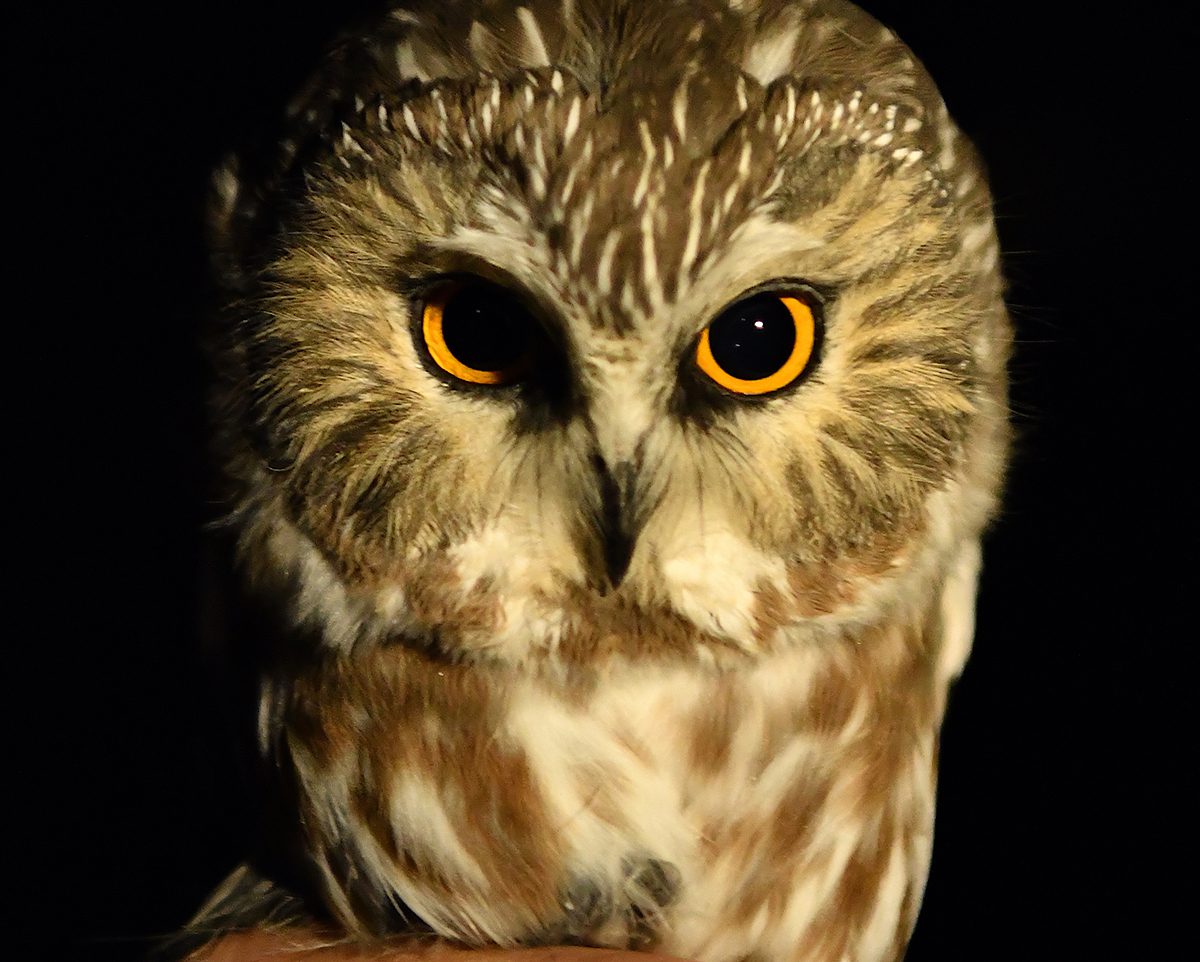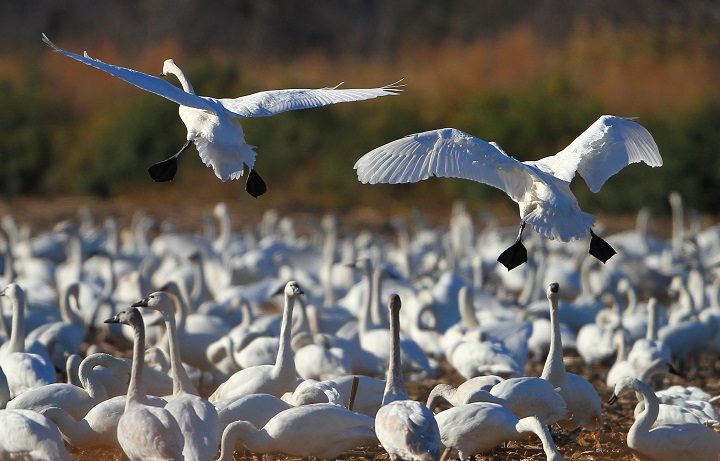
“Hear the music, the thunder of the wings. Love the wild swan” — Robinson Jeffers, American poet
The warm, long golden days of summer are behind us, blown aside by the windy cold fronts bellowing out of the Arctic. Hitching a ride on these southbound frigid blasts of air are tundra swans. The silent hands on nature’s clock have activated the alarm. Urged on by instincts for eons, the swans have followed an invisible highway etched in the sky by previous generations.
Supporter Spotlight
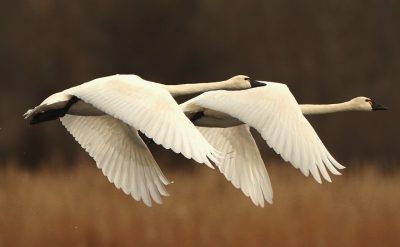
These large white birds with a long elegant neck will sometimes cruise along at 50 miles per hour and as high as 5 miles up to reach their destination. Many things in nature are constant, yet, they represent a change.
As reliable as the sun rising out of the darkness and into a new day, each autumn the tundra swans return to the lakes and fields of northeastern North Carolina.
Also known as the whistling swan, explorer Meriwether Lewis designated them as such due to the sound its wings make while flying. The more formal name, tundra, indicates the location of its breeding grounds high in this Arctic habitat. Here, the swans nest and raise their young during the short warm summer before migrating close to 2,500 miles to the east coast.
From high in the sky, their destination stands out like the bull’s eye on a target. Lake Mattamuskeet, at close to 18 miles long and 5 miles wide, is an important way station for migratory waterfowl along the Atlantic Flyway.
As the swans begin to trickle in during November, the lake provides the perfect habitat for the birds to survive the winter and fatten up before the return trip in the spring. The 40,000-acre lake is shallow with an average depth of about two and a half feet. This is ideal for the swans to reach submerged vegetation with their long necks.
Supporter Spotlight
Managed as a National Wildlife Refuge, it also includes 2,600 acres of marsh impoundments that provide food and cover for the birds.
The expansive agricultural fields surrounding the refuge are also loaded with kernels of golden corn, littered by the harvester, which the swans will quickly scavenge.
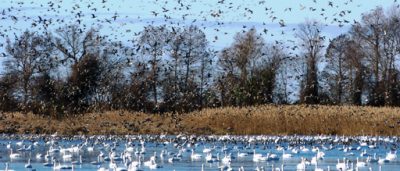
As thousands of the swans converge on Lake Mattamuskeet, the National Wildlife Refuge and the North Carolina Wildlife Resources Commission organize a daylong festival of activities to celebrate their arrival. Known as Swan Days, the event is held annually on the second Saturday in December, this year set for Dec. 8.
Events for the festival are staged out of the Mattamuskeet High School on U.S. 264 starting at 10 a.m. All parking for the event is at the high school and shuttles will transport participants for the activities conducted in the refuge, including the popular guided birding tram tours. Some activities will be in the refuge and some will take place at the school.
Free activities include birding tram tours, a lecture on the history of Lake Mattamuskeet, Sylvan Heights Bird Park display with live birds including a black swan, kids programs, decoy carving, “Lunch with the Guides” storytelling with tour guides and nature photography workshop. Additionally, there will be presentations offered on several topics such as the diversity of bird life around the lake, the Mattamuskeet Lodge renovation and Native American history as well as an exhibit by the North Carolina Estuarium on local plants and animals and vendors with arts, crafts and food.
Swans are a fixture in cultural lore throughout the world and have come to represent love, beauty, purity and grace. As they feed in the fields, marshes and on the lake, the chorus of their calling can be heard from great distances.
It is an enjoyable sound to hear, so much so that E.B. White wrote in his children’s book “Trumpet of the Swan,” that “There is nothing in all the world I like better than the trumpet of the swan.”
Swan Days isn’t the only wildlife-related festival going on during the second weekend in December.
Nearby, the encore edition of the Wings Over Water Wildlife Festival will be offering birding field trips at the Alligator River, Pea Island and Lake Mattamuskeet National Wildlife Refuges and Cape Hatteras National Seashore. The event was started in 1997 to inspire the public to visit and learn about the diversity of wildlife and their habitat within our National Wildlife Refuges.
Sponsored by the Coastal Wildlife Refuge Society as an annual fundraiser, the bulk of this event occurs in mid-October with more than 80 field trips venturing into six refuges.
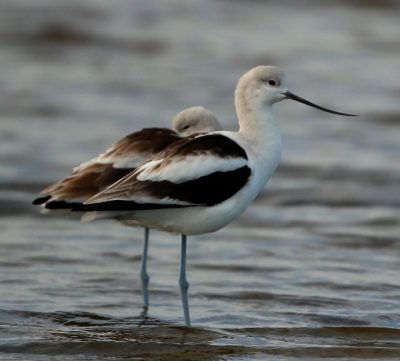
Since many migratory bird species aren’t present during the October session, an encore session of 13 field trips is offered Dec. 7-9.
The field trips, led by expert trip leaders, will venture into the refuges to look for a variety of migratory waterfowl, song birds, shorebirds and birds of prey species.
Participants might see the American avocet, purple sandpiper, American white pelican, piping plover, peregrine falcon, snow geese, tundra swans and a variety of ducks.
Birds aren’t the only game in town though; the refuges are also home to black bear, red wolves, river otters, foxes and bobcats. Each year these animals are routinely sighted during the outings. Registration and a fee are required to attend these field trips.
These two events offer an extraordinary opportunity to get outdoors and connect, reconnect or continue your love affair with nature by observing some magnificent wildlife. It’s waiting for you, just go!



